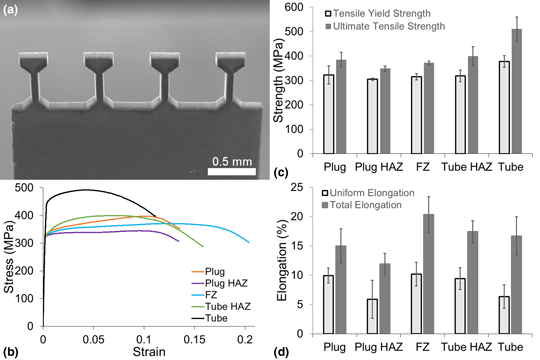Article contents
Sizing up mechanical testing: Comparison of microscale and mesoscale mechanical testing techniques on a FeCrAl welded tube
Published online by Cambridge University Press: 10 August 2020
Abstract

FeCrAl alloys are among the best and most mature accident tolerant fuel cladding candidates produced to date, due to their superior combination of mechanical properties and stability at elevated temperatures. For fuel cladding applications, these materials are drawn into tubes with plugs welded to the ends. The mechanical properties of such welds and the impact on cladding performance have not been fully investigated. A novel mesoscale mechanical test and a variety of microscale tests were performed to evaluate a range of properties including nanoindentation hardness, compression and shear yield strengths, and tensile strengths and elongations. Micromechanical testing generally matched the trends of the larger mesoscale testing, with nanoindentation reproducing the trend the best, although some discrepancies existed in regions with low dislocation content. Mesoscale tensile testing showed good correlation with macroscale tests and revealed that the plug heat-affected zone possessed the lowest strength and ductility. This indicated that failure would occur first in or near this region.
Keywords
- Type
- Article
- Information
- Copyright
- Copyright © Materials Research Society 2020
References
REFERENCES
- 8
- Cited by





